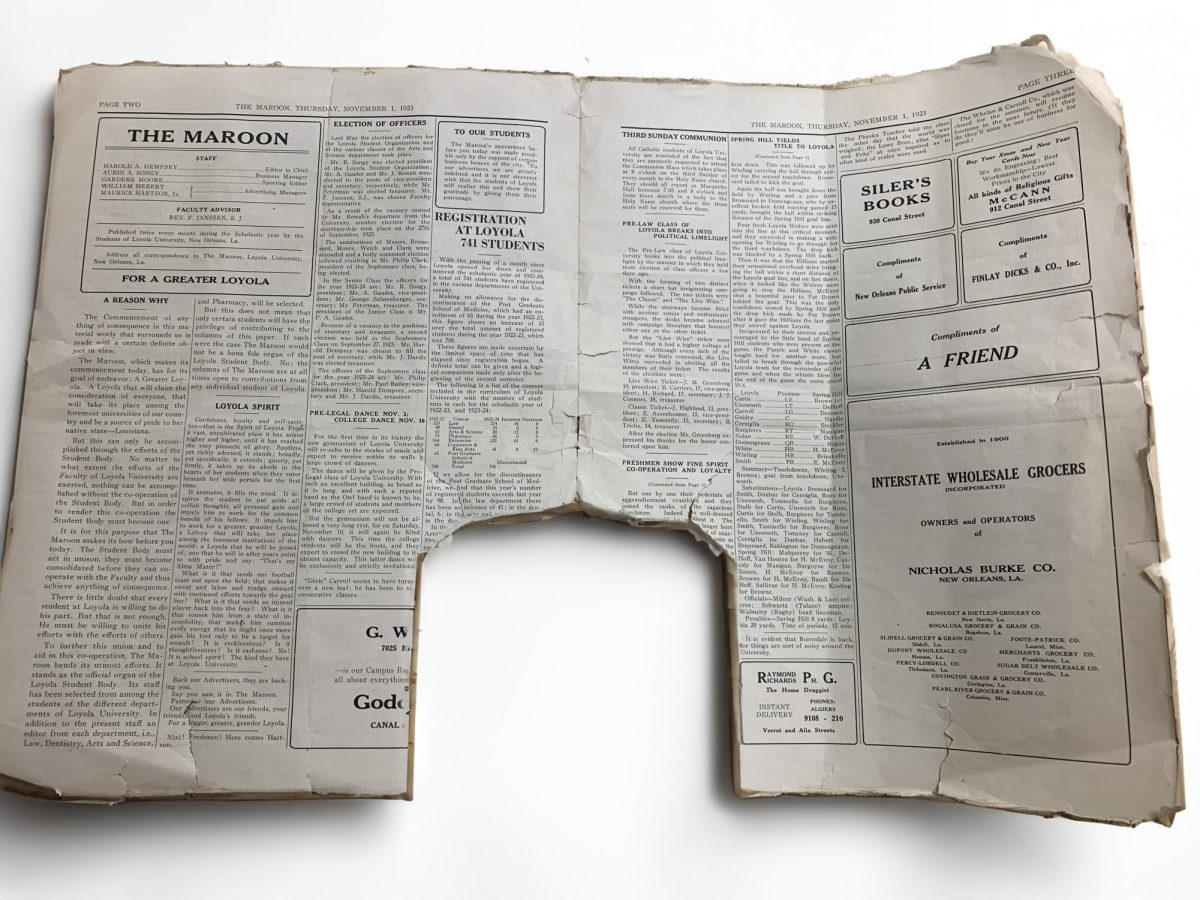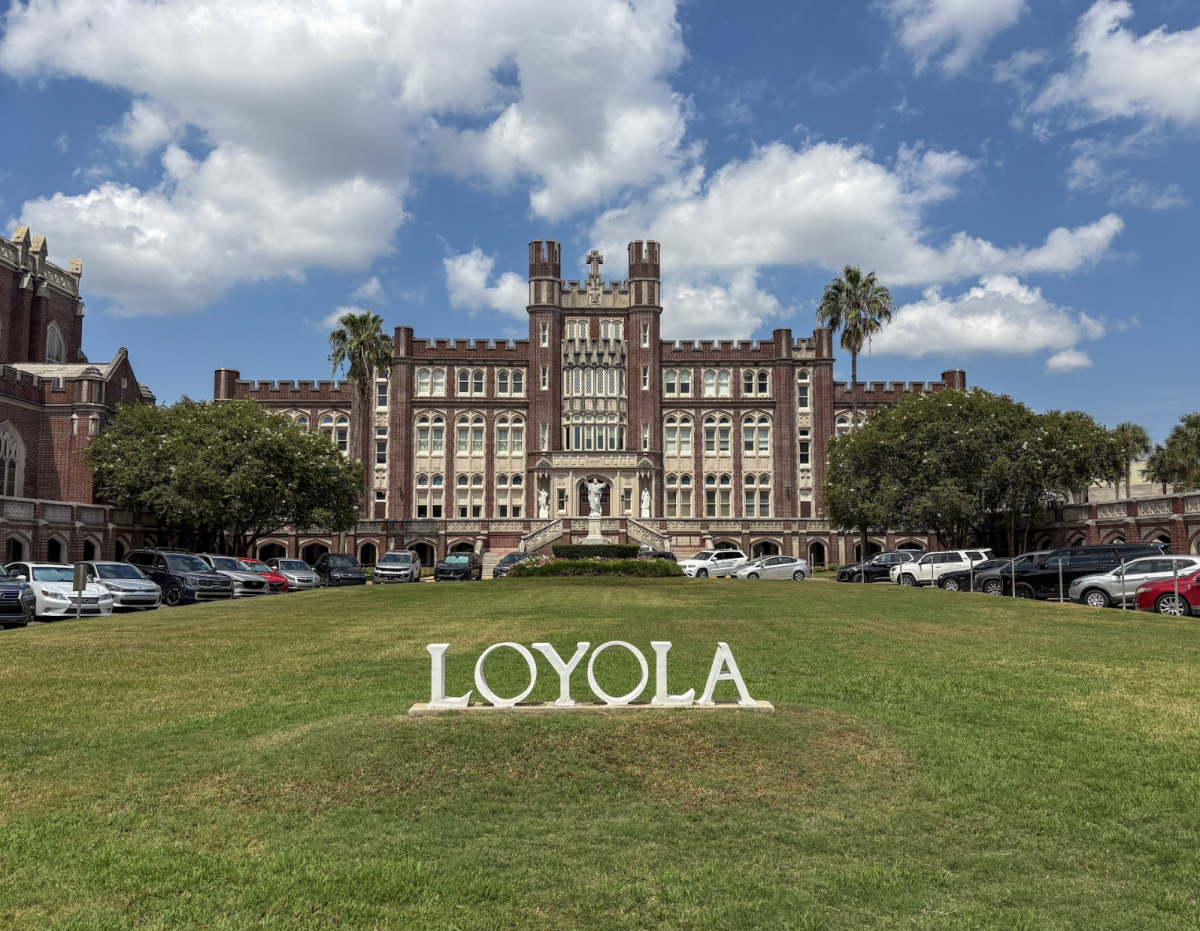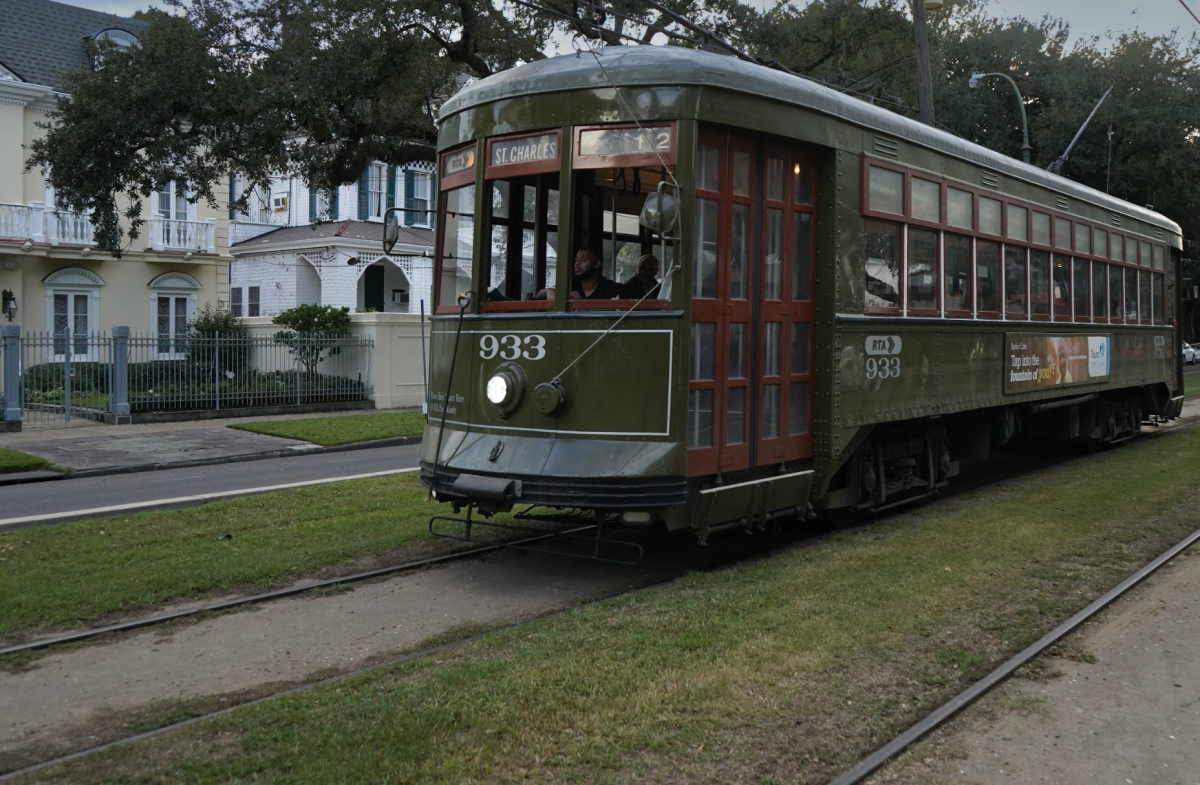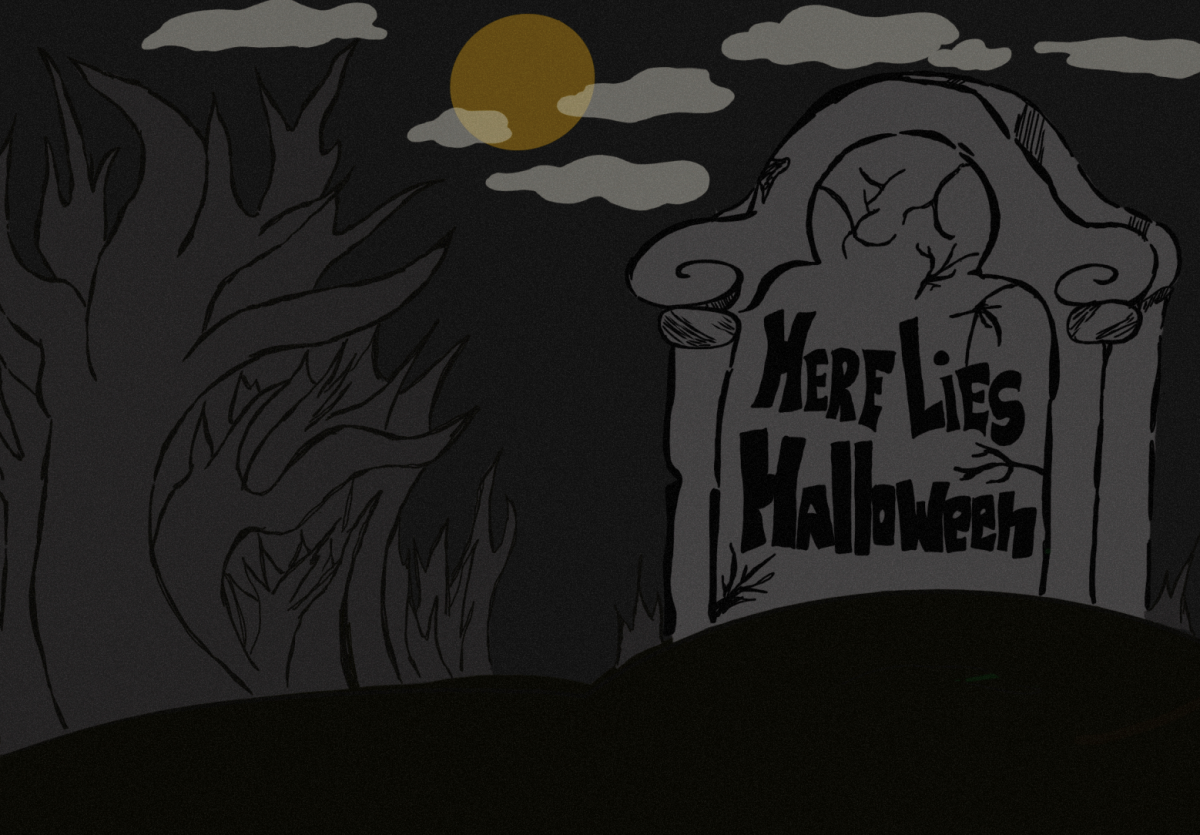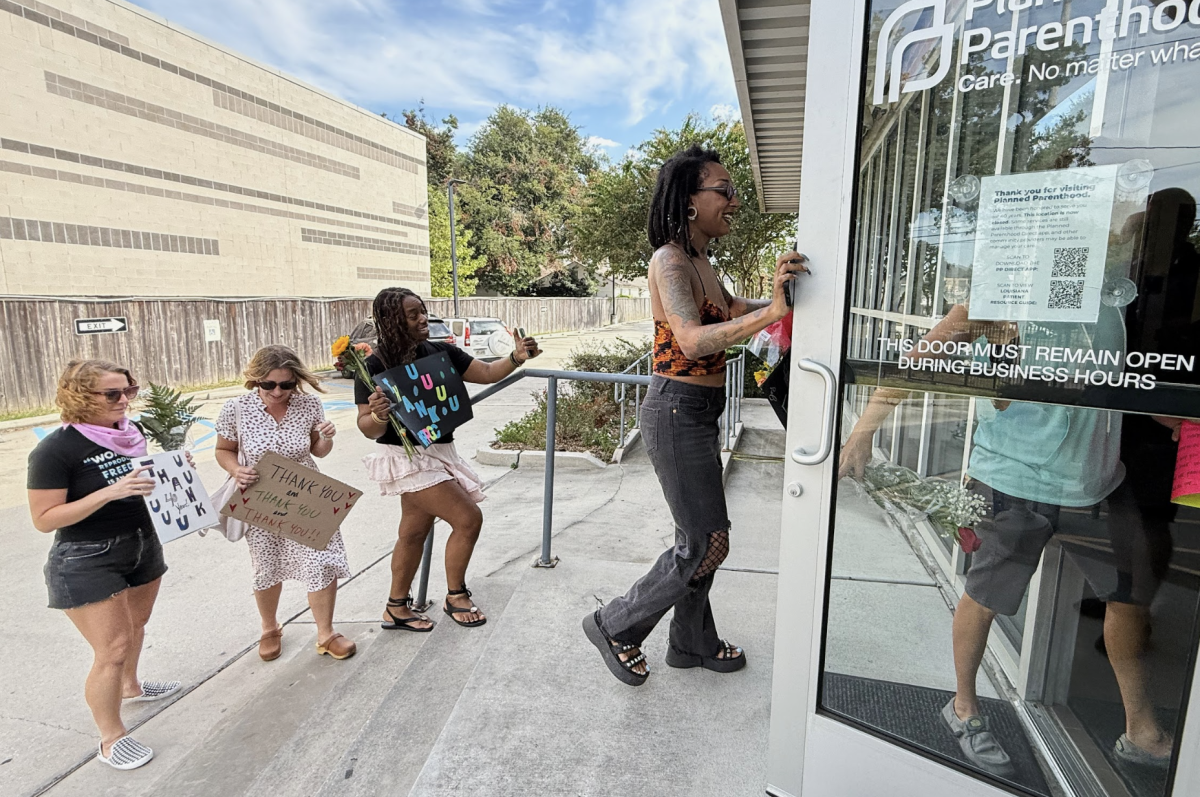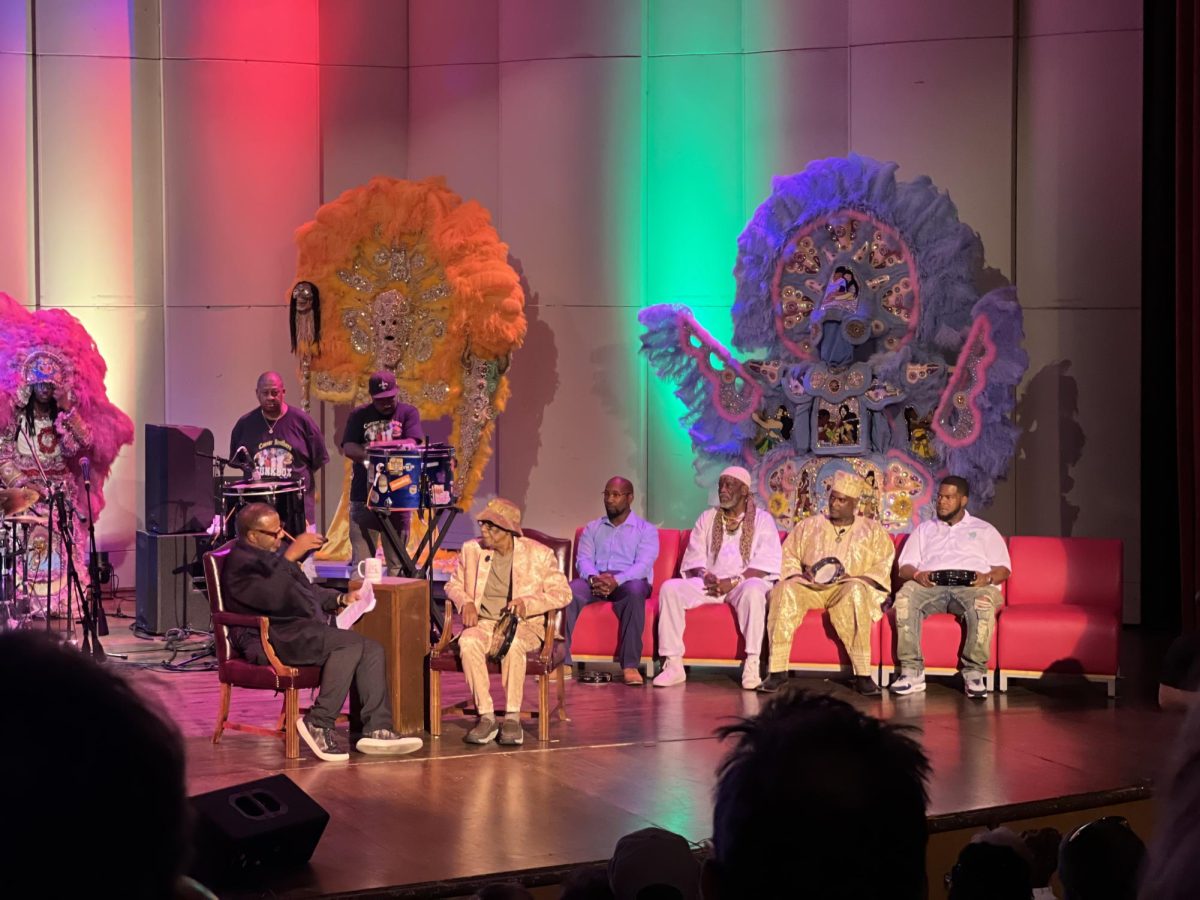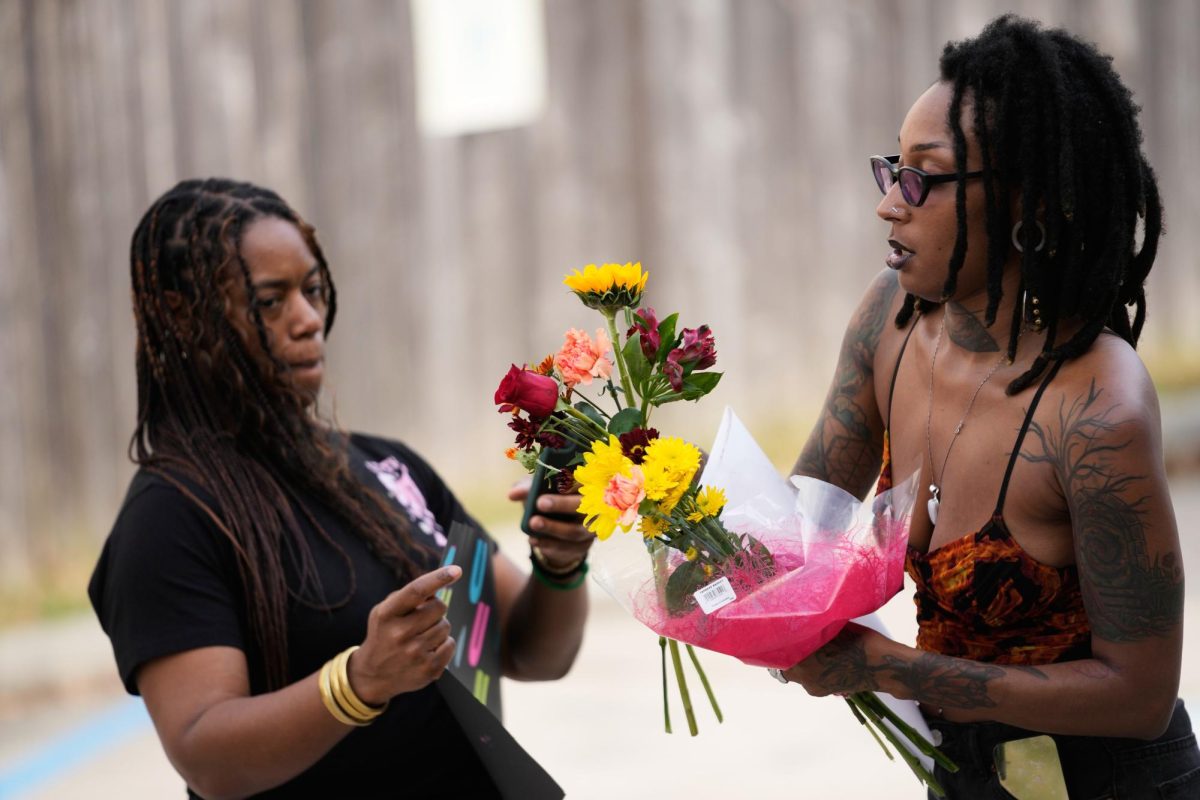Editor’s Note: The editorial published in 1923, which articulated the mission of “A Greater Loyola,” marks a significant milestone in The Maroon’s history as it was the first-ever editorial written by our publication. This inaugural piece set the tone for our enduring commitment to fostering a sense of unity and cooperation within the Loyola community while championing the university’s growth and progress. As we celebrate our centennial year, we look back at this historic editorial with gratitude for its role in shaping our journey, as we continue to uphold the principles it laid out a century ago.
[Scroll for the centennial editor’s response to this editorial 100 years later.]
A reason why: The Maroon’s first editorial
The Commencement of anything of consequence in this material world that surrounds us is made with a certain definite object in view.
The Maroon, which makes its commencement today, has for its goal of endeavor: A Greater Loyola. A Loyola that will claim the consideration of everyone, that will take its place among the foremost universities in our country and be a source of pride to her native state — Louisiana.
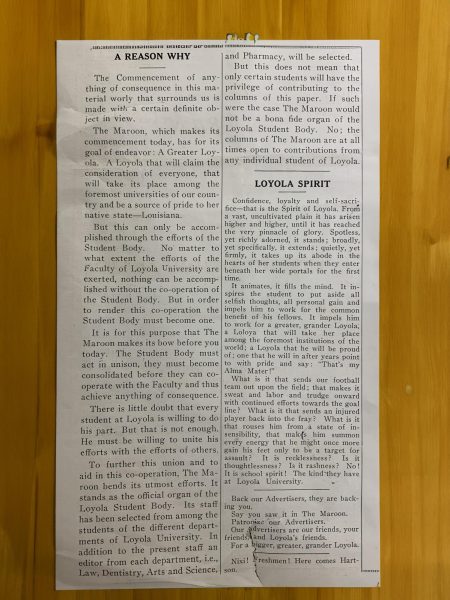
But this can only be accomplished through the efforts of the student body. No matter to what extent the efforts of the Faculty of Loyola University are exerted, nothing can be accomplished without cooperation of the student body. But in order to render this cooperation the student body must become one.
It is for this purpose that The Maroon makes its bow before you today. The student body must act in unison, they must become consolidated before they can cooperate with the Faculty and thus achieve anything of consequence.
There is little doubt that every student at Loyola is willing to do his part. But that is not enough. They must be willing to unite their efforts with the efforts of others.
To further this union and to make aid in this cooperation, The Maroon lends its utmost efforts. It stands as the official organ of the Loyola student body. Its staff has been selected from among the students of the different departments of Loyola University. In addition to the present staff, an editor from each department, i.e., Law, Dentistry, Art and Science, and Pharmacy, will be selected.
But this does not mean that only certain students will have the privilege of contributing to the columns of this paper. If such were the case The Maroon would not be a bonafide organ of the Loyola student body. No, the columns of The Maroon are at all times open to contributions from any individual student of Loyola.
Reflecting on a greater Loyola: 100 years later
A century ago, in the fall of 1923, the first ever editorial of The Maroon was published, marking the inception of our beloved institution’s official voice. It carried with it a mission, one that has resonated through time and remains firmly ingrained in our hearts: “A Greater Loyola.” Now serving as Editor in our 100th year I think it’s fitting that we reflect on this enduring commitment as well as the evolution of our institution.
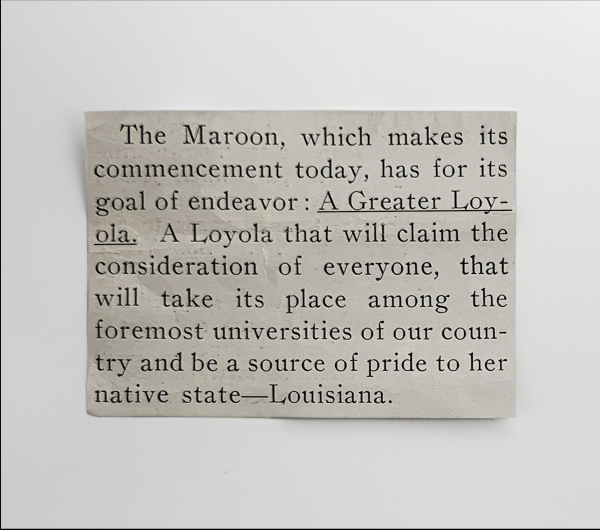
The Maroon’s founders envisioned a Loyola that would claim the consideration of everyone, take its place among the foremost universities in our country, and be a source of pride to our native state, Louisiana. Their dreams have, without a doubt, come to fruition, as Loyola University stands tall today, a thriving educational hub in our vibrant city. However, as we commemorate our centennial year, it is crucial that we analyze how the landscape of journalism and our university has transformed over the past century.
Back in 1923, The Maroon embarked on its journey with a mere 12 members on its staff. Today, as we celebrate our 100th year, we are proud to say that we have grown tremendously, with over 50 dedicated students on our staff. This growth mirrors Loyola’s own transformation, as we’ve transitioned from a small and fledgling newspaper to a prominent publication with a diverse and dynamic team.
While The Maroon’s dedication to inclusivity and cooperation remains steadfast, our university has evolved. We no longer have the Colleges of Dentistry and Pharmacy, but in their place, we’ve witnessed the emergence of the College of Business, College of Music and Media, College of Nursing and Health, and City College. Our institution’s horizons have expanded to accommodate diverse fields of study, embracing the ever-changing needs of society.
The Student Body’s composition and interests have evolved as well. We’ve observed a shift in contributors to our paper, with journalism and communications students forming the core of our team. It’s no surprise, given the digital age we live in, where media and communication have become pivotal aspects of our lives. While this has been a significant influence on our journey, it’s important that we continue to widen our horizons. And this semester we’ve made great strides to fill our paper with contributors from every corner of our college, reflecting the diversity of our campus.
Our commitment to holding administrations accountable and covering essential campus and community events remains unwavering. We have adapted to the changing times by building better channels to connect with every type of student. The Maroon, in its 100th year, thrives not only as a newspaper but as a digital platform, engaging with a wider audience through various forms of media, thus ensuring that our audience is as diverse and dynamic as the topics we cover.
Today, I am proud to share that The Maroon has earned its place as the nation’s best college newspaper. We’ve garnered numerous awards in both broadcast and print journalism, including being named the #1 collegiate paper multiple times (and now two years in a row) – by the Society of Professional Journalists. Our accomplishments speak volumes: we’ve secured eight Pacemakers and have been nominated for many more. Our journalists have gone on to win prestigious Pulitzers, report from the most challenging war zones, and inform the world about the most critical issues of our time.
The Maroon has come a long way since its inception, and Loyola University has grown and adapted in remarkable ways. As we reflect on the past and look to the future, we must remember the principles that guided us through a century of progress: unity, cooperation, inclusivity, and the pursuit of A Greater Loyola. Our mission remains the same, even as the world around us transforms. As we celebrate our 100th year, we renew our commitment to our beloved institution and continue to embody the spirit of that inaugural editorial from 1923.
Together, we shall work toward a Loyola that stands as a beacon of knowledge and journalistic excellence, remaining ever relevant in a changing world.
Yours in journalism and dedication to A Greater Loyola,
Patrick T. Hamilton
Editor-in-Chief, Fall 2023


